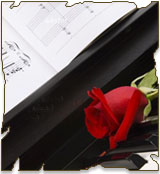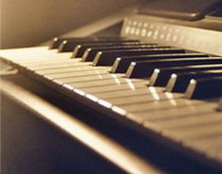Welcome to Piano-Sheets.NET

Discover thousands of Piano Sheets
Think of any of the classical musicians such as Beethoven, Mozart or Brahms and you will instantly think of brilliant piano notes! Well, on our site, we provide you some of the best free sheet music you can find online. Sheet music piano was used during olden days, especially during the 19th century. Most families back then used sheet music to play different songs in their parlor. With today's modern instruments, sheet music free piano lessons maybe a thing of the past but there are still sites like us who provide you with free sheet music! Systematic instructions! At our site you will find virtually thousands of free piano notes via our piano sheet provided free. We believe that there is a piano lover in everyone and you deserve a chance to learn how to play on piano. Our fine collection of music sheets have some of the best songs available and you can use them to play any of the music notes you always wanted! The best collection! Our collection of sheet music free piano notes are the best across all similar sites. We have accumulated a veritable collection of sheet music for piano to enable you to play as many of the classical compositions as you want to! Why spend a fortune on lessons about how to play piano when you can download all of the music notes free?
Top Piano Sheets
You're Still My Man by Whitney Houston Piano Sheets
Bruce Springsteen Sheet Music for River - The
Sonny Rollins Piano Sheets for Strode Rode
Ships - Rowland Charles Gould Piano Sheets
Helena - My Chemical Romance Piano Sheets
Sheet Music for This Masquerade by Carpenters - The (Ver. 2)
The Story by Brandi Carlile Sheet Music
Second Chance by Shinedown (Ver. 3) Piano Sheets
I Won't Let Go by Rascal Flatts Piano Sheets
18 Till I Die - Bryan Adams (Ver. 3) Piano Sheets
Bruce Springsteen Sheet Music for River - The
Sonny Rollins Piano Sheets for Strode Rode
Ships - Rowland Charles Gould Piano Sheets
Helena - My Chemical Romance Piano Sheets
Sheet Music for This Masquerade by Carpenters - The (Ver. 2)
The Story by Brandi Carlile Sheet Music
Second Chance by Shinedown (Ver. 3) Piano Sheets
I Won't Let Go by Rascal Flatts Piano Sheets
18 Till I Die - Bryan Adams (Ver. 3) Piano Sheets
Newest Piano Sheets
The Story by Brandi Carlile Piano Sheets
Sheet Music for 42 by Coldplay (Ver. 2)
Helena by My Chemical Romance Piano Sheets
Bryan Adams Piano Music for 18 Till I Die (Ver. 3)
Casting Crowns Piano notes for Who Am I
Cat Stevens Sheet Music for Morning Has Broken (Ver. 5)
Jesus Paid It All by Elvina Hall Sheet Music
Sheet Music for No Air by Jordin Sparks And Chris Brown (Ver. 4)
Owl City Sheet Music for Honey And The Bee
Second Chance - Shinedown (Ver. 3) Sheet music
Sheet Music for 42 by Coldplay (Ver. 2)
Helena by My Chemical Romance Piano Sheets
Bryan Adams Piano Music for 18 Till I Die (Ver. 3)
Casting Crowns Piano notes for Who Am I
Cat Stevens Sheet Music for Morning Has Broken (Ver. 5)
Jesus Paid It All by Elvina Hall Sheet Music
Sheet Music for No Air by Jordin Sparks And Chris Brown (Ver. 4)
Owl City Sheet Music for Honey And The Bee
Second Chance - Shinedown (Ver. 3) Sheet music
Random article
How to locate free sheet music easily If you want to learn how to play piano then having access to free sheet music can be an inexpensive and great way to learn! There are plenty of websites online, which offer you high quality sheet music free. Here are some ways you can locate these sources for your benefit.
The concept of free
If a site provides sheet music, which you can download and print without any infringement of copyright or violations then this is free sheet music. Some websites may have a prerequisite of attaining membership via subscriptions to newsletters or registering with an account. In order to arrive at sites providing no obligation free sheet music, it may take a bit of effort and patience but the results are worth it!
(More...)
Pictures




